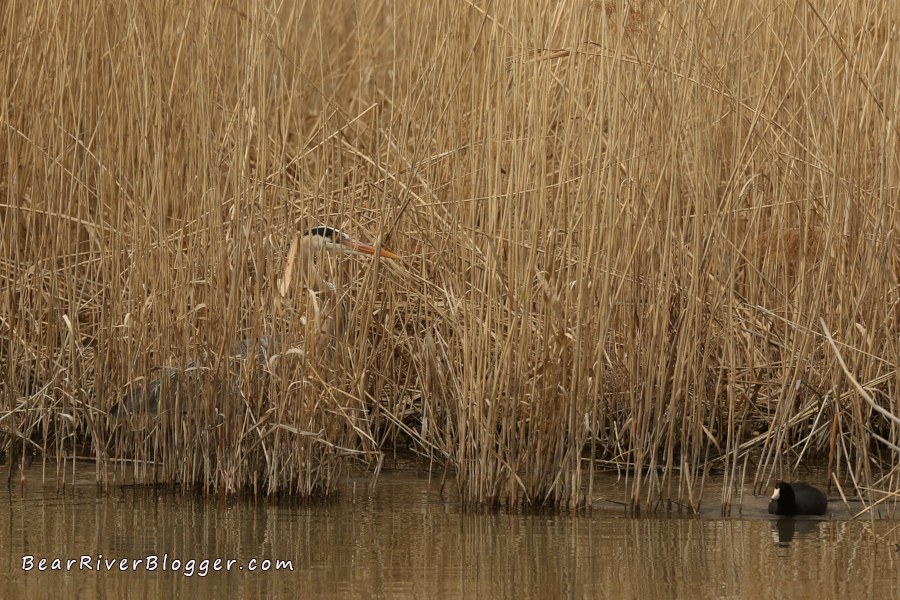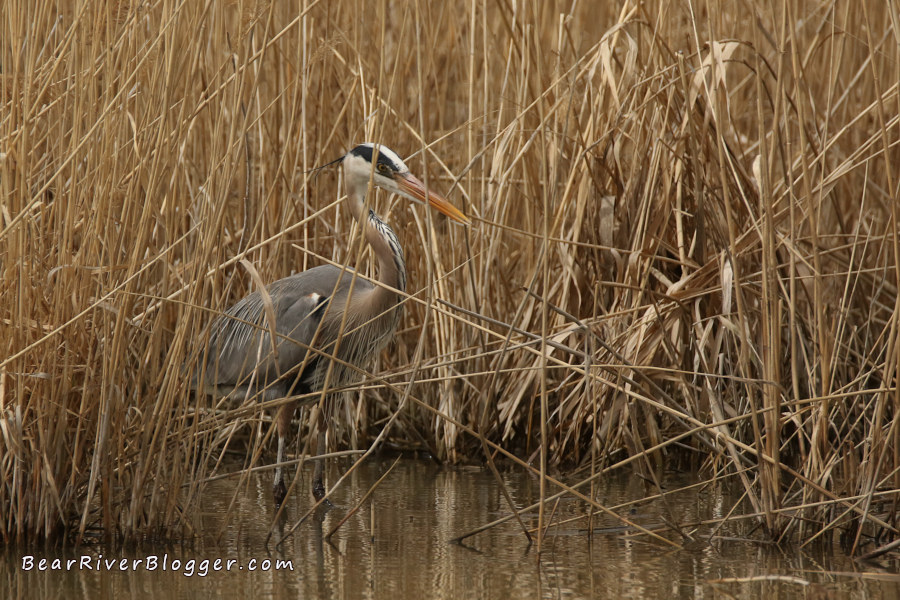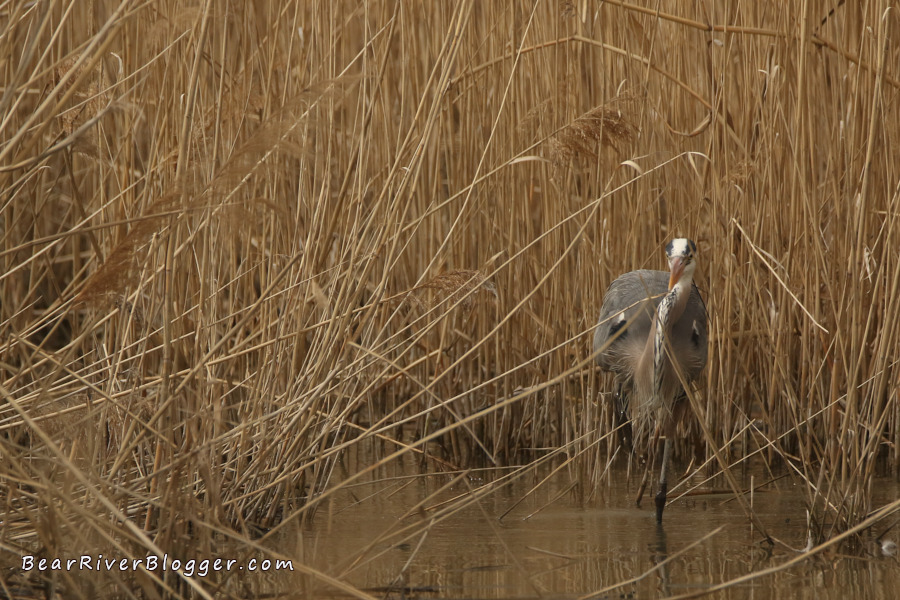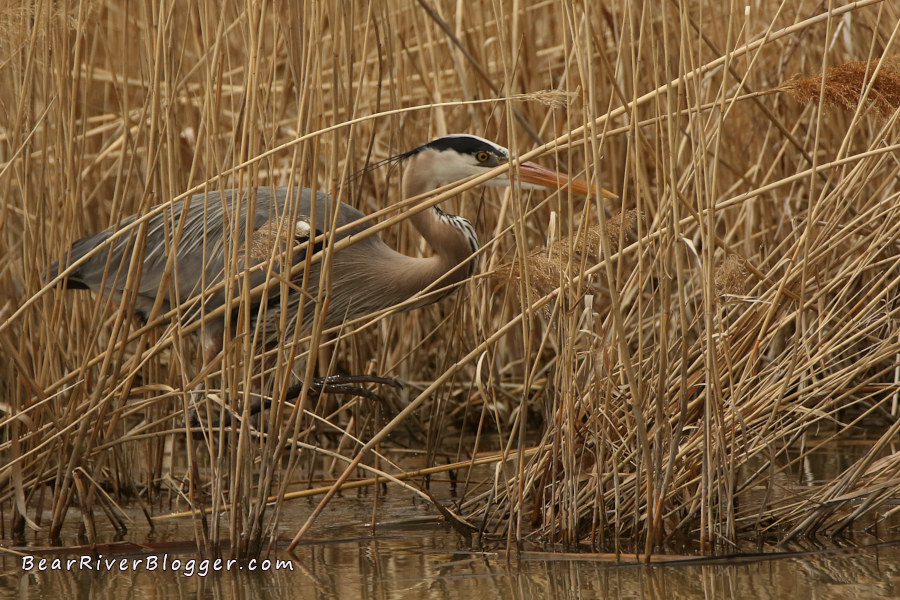If there’s a bird I love to photograph more than the great blue heron I honestly don’t know what it would be.
The American white pelican would be a very close second, maybe even tied for my favorite photography subject, but if the truth is known there isn’t a bird I spend more time seeking out and trying to put in front of my camera lens than the great blue heron.
Each and every time I traverse the self-guided 12-mile Bear River Migratory Bird Refuge auto tour route, no matter what time of the year it is mind you, my eyes are constantly searching its roadside sloughs, canals, and, yes, even frozen wetlands for a great blue heron willing to pose for my camera.
Sometimes I find one, other times I don’t but there hasn’t been a single trip around the auto loop in several decades that I haven’t wanted to find and photograph a great blue heron in some manner or fashion.
Part of that desire stems from great blue herons are fascinating birds in their own right as they are capable of standing perfectly still for long periods of time while stalking the shallow waters for fish and other aquatic creatures for a meal.
Another part of my fascination with herons, maybe even the larger part on days like I had last week on the refuge, is great blue herons aren’t always the easiest bird to photograph despite them being very still and patient at times as they wade the shallow waters for food.
In fact, this stillness and patience they possess while hunting can oftentimes lead to, well, a bit of frustration and a great challenge for photographers like it did for me last week when I came across a great blue heron stalking the overgrown edges of a roadside canal on the east leg of the auto loop.
With food obviously first and foremost on its mind, the great blue heron was in no hurry to leave as I pulled up in my vehicle and parked but, unfortunately, it was also in no hurry to break through the curtain of phragmites that kept me from getting a clean image of the heron as it stalked canal for fish.

For nearly 10 minutes the heron stayed behind the tapestry of dried phragmites, only giving me very brief glimpses of itself without an overabundance of distracting branches in the way as it slowly lifted and carefully placed each foot in the soft mud to not give its location away to any unsuspecting fish in the vicinity.
I kept my large Tamron 600 mm lens focused on the stealthy heron during the entire scene but each time it appeared to break through the annoying vegetation the bird turned back and headed the other way.
Eventually, another car pulled up and parked behind mine and the heron flew off down the canal never to be seen again that day, leaving me with only a few decent blog-worthy images of the bird aboding in its natural environment but nothing I’d classify as artsy in any manner of speaking as it purposely stalked the shallower waters that were behind a wall of phragmites.
Maybe it’s the lifelong birdwatcher in me, maybe it’s the decades-old photographer in me, or maybe it is both but either way, the great blue heron is a fascinating bird to watch and photograph year-round and one I will always seek out with my camera to photograph, no matter the challenge or obstruction, wherever they may be found on my blog related travels.
As a side note for anyone interested in herons, there will be a great blue heron viewing day at the Farmington Bay rookery on April 20, 2024, more precisely at the George S. and Dolores Dore Eccles Wildlife Education Center from 11 a.m. to 2 p.m. where personnel from the Utah Division of Wildlife Resources will be there to answer questions and to help you spot the herons.

Now that spring is here the great blue herons are actively nesting on the rookery and its close proximity to the visitors center parking lot and nature trail makes it both a tremendous opportunity and a great location for birdwatchers and photographers alike to spend some time watching and learning about these fascinating birds during the breeding season.
In addition to the Bear River Migratory Bird Refuge auto tour route, Farmington Bay is another great location to find, view, and photograph great blue herons year-round here in northern Utah as I commonly find them in the wetlands around the visitors center parking lot and on the open areas of Farmington Bay itself.
If you are a birdwatcher or nature photographer like myself, one that loves birds such as the great blue heron, I offer you to head on over to our subscribe page and sign up for email notifications for future blog posts about birds and nature, both on and off of the famous Bear River Migratory Bird Refuge.
For those of you who utilize social media outlets, we also have recently set up a Bear River Blogger Facebook page where we post updates and other images about our photography efforts on and off of the Bear River Migratory Bird Refuge.
(A Discussion About Great Blue Herons. For short nature photography tips and interesting stories about the natural world around us, subscribe to our Bear River Blogger channel on YouTube for videos and updates from our travels while out in nature, both on and off of the famed Bear River Migratory Bird Refuge.)





